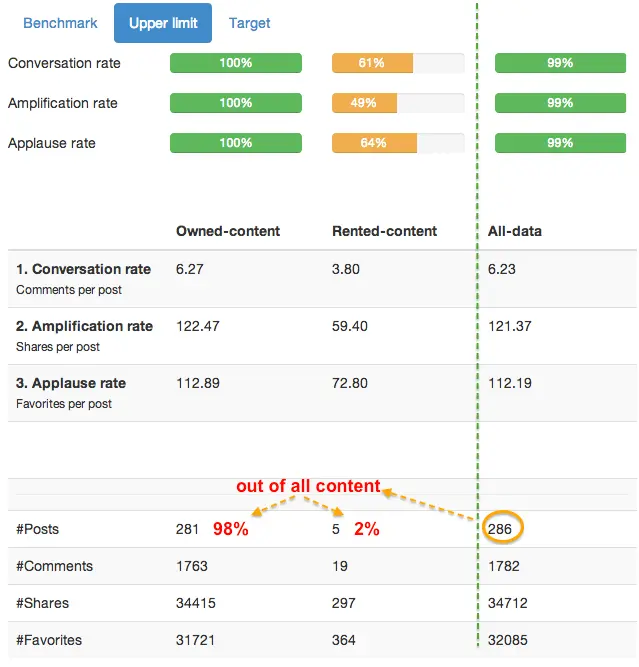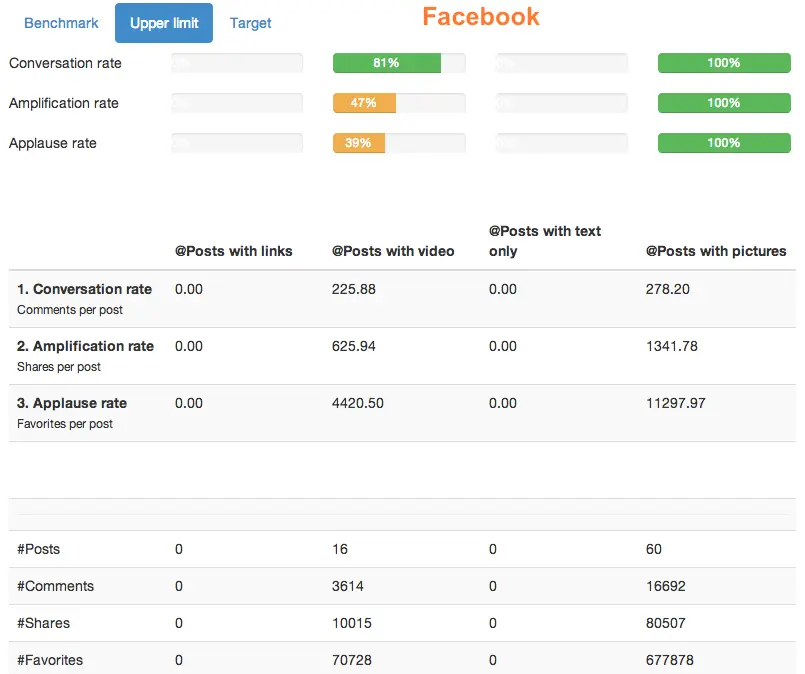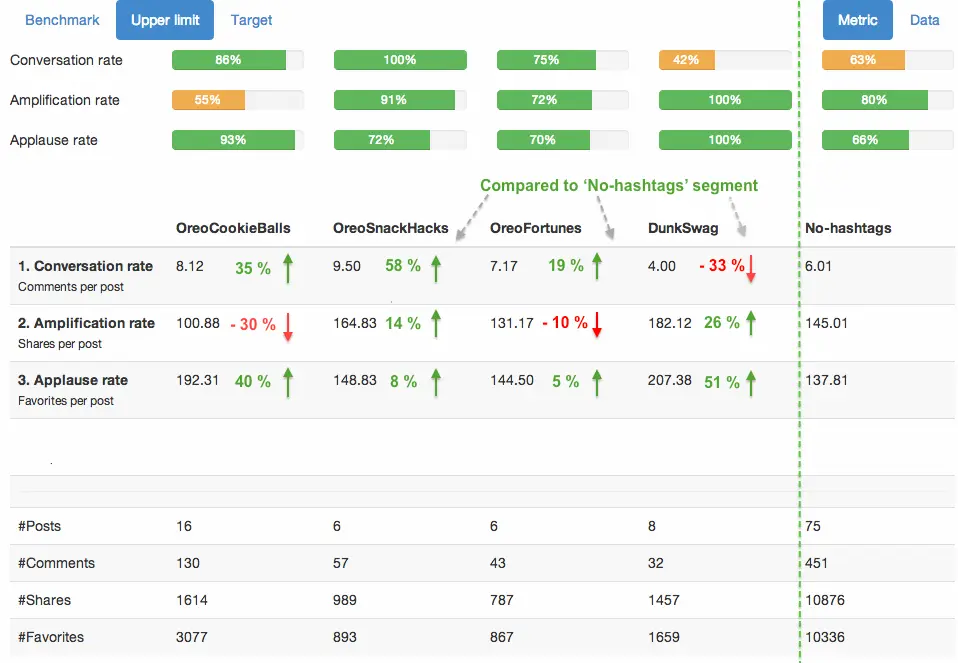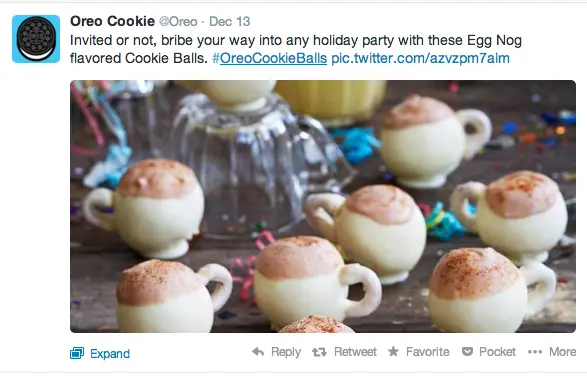Lesson 3.5.
Segmentation
This report helps you Segment your posts and compare different segments to find out which type of content is the most engaging for your followers.
Use Content Segmentation report to:
- Are your Social Media Campaigns outperforming your Usual Content?
- Are Retweets less engaging than your Own Content?
- What are the most effective content ideas?
- What type of content is the most effective: pictures, links, videos or plain text?
1.Social Media Campaigns vs Usual Content.
Compare the performance of your Social Media Campaigns with each other and with your Usual content by creating segments containing your campaign keywords/hashtags and a segment excluding these keywords/hashtags.
Example:
In this example Oreo’s mini content series in Twitter are compared with each other and Oreo's usual content (not containing content hashtags). 'OreoCookieBalls' and 'OreoFortune' segments are less viral than Oreo's usual content. These segments have 30% and 10% less shares per post than usual content. And 'DunkSwag' segment has 33% less comments per post than Oreo's usual tweets.
Read the full case study:
How Oreo rocks in Twitter: using content segmentation for tweets analysis
Describing the content analysis with the help of Custom segmentation - analyzing content-campaigns, different content types (links, images, videos, plaintext), owned vs rented content performance, and comparing different content types effectiveness on several social networks.
2. Rented vs Owned Content.
Another useful aspect to analyze is the proportion between Owned and Rented content (your Own posts vs Retweets) and the effectiveness of both content groups.
Example:
Current evidence shows that retweets perform worse than a brand’s own content for all different types of brands, industries and countries. The only question is to work out by how much worse.
Oreo's Rented content (Retweets) are almost 2 times worse in performance when compared to their own tweets (Owned content). So it's great they keep a nice proportion between Owned and Rented - only 2% of their content is Retweets.

Data from Segmentation Metrics report
Read the full case study:
How Oreo rocks in Twitter: using content segmentation for tweets analysis
Describing the content analysis with the help of Custom segmentation - analyzing content-campaigns, different content types (links, images, videos, plaintext), owned vs rented content performance, and comparing different content types effectiveness on several social networks.
3. Compare several topics.
Create several segments with different keywords to compare which topics perform better for your accounts.
Example:
For Walmart on Facebook the "Feeding America" related topics are totally drawing the most attenting compared to other topics - it has the highest number of comments, shares and likes per post.
"Christmas" spirit is also a great conversation starter for them with the second highest Conversation rate. Although mentioning "gifts" in the posts wasn't such a great idea. And "school" is the looser among all ideas with the lowest engagement stats. Who loves preparing for school? No one :)

Data from Segmentation Metrics report
4. Compare types of content.
Compare which types of content perform better in each social network for your accounts: images, videos, links or plain text posts.
Example:
In the example below, for Oreo’s Facebook page there are no posts with links and no plain text posts at all. And strangely, pictures are performing better than videos.

Data from Segmentation Metrics report
Read the full case study:
How Oreo rocks in Twitter: using content segmentation for tweets analysis
Describing the content analysis with the help of Custom segmentation - analyzing content-campaigns, different content types (links, images, videos, plaintext), owned vs rented content performance, and comparing different content types effectiveness on several social networks.

